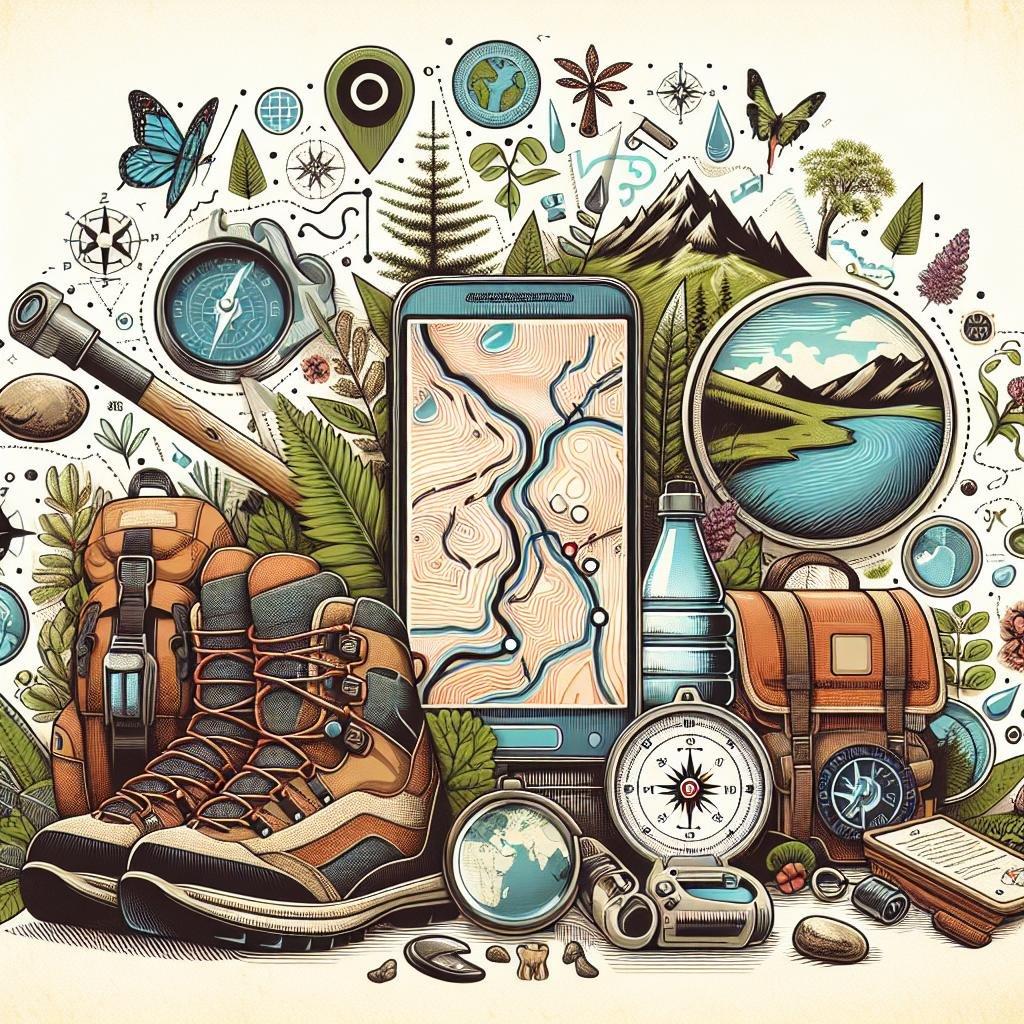In the verdant embrace of the Smoky Mountains, nature whispers secrets only heard by those who venture off the beaten path. As you step into this lush tapestry of towering trees and mist-draped hills, the promise of uncovering hidden gems and tranquil sanctuaries awaits. Among these treasures are the pristine water sources that catch the sun’s fleeting glimmers and offer a sweet, refreshing respite to weary explorers. Whether you’re an experienced trekker or a curious wanderer, discovering the perfect hiking trails that lead you to these shimmering streams and secluded cascades is both an art and a quest. Join us as we unveil the path to finding these aquatic havens, guiding your steps through the Smokies’ timeless beauty and nature’s soothing symphony.
Exploring the Smoky Mountains: An Introduction to Trails with Water Features
Draped in layers of mist and overflowing with wildlife, the Smoky Mountains offer an entrancing blend of hiking paths that meander through splashing waterfalls, serene creeks, and glistening streams. Hiking trails with water features beckon adventurers, promising not only breathtaking vistas but also the tranquil sound of water guiding your steps. Whether you’re seeking the gentle trickle of a hill-born spring or the thundering roar of a majestic waterfall, these trails are gateways to nature’s most engaging symphonies. For those aiming to combine the joy of hiking with the soothing allure of water, consider trails that provide both: mountain ridges and valley streams.
When setting out to explore, consider these key features as highlights along the way:
- Laurel Falls Trail: Experience the elegance of an 80-foot-high waterfall, especially captivating after a season of rain.
- Abrams Falls Trail: Despite its relatively short stature, Abrams Falls impresses with its sheer volume of water.
- Deep Creek Waterfall Loop: Enjoy a triple treat with Juney Whank Falls, Tom Branch Falls, and Indian Creek Falls within reach.
| Trail Name | Water Feature | Difficulty |
|---|---|---|
| Laurel Falls Trail | Cascading Waterfall | Easy |
| Abrams Falls Trail | Powerful Waterfall | Moderate |
| Deep Creek Loop | Multiple Waterfalls | Moderate |

Understanding Trail Maps: Navigating Your Way to Water Sources
Trail maps are your best friends when it comes to discovering pristine water sources while hiking in the Smoky Mountains. These maps not only guide you through the breathtaking landscapes, but also highlight key features such as streams, rivers, and waterfalls. When perusing a map, look for blue lines and shapes which denote water bodies. Studying the elevation is crucial too, as it will give you an idea of the water flow; remember, water moves downhill. Consider these tips when using a trail map:
- Check color codes: Different map publishers might use variations in colors to indicate streams or lakes.
- Scout for contour lines: Close contours might signal a gorge or a ridge, often leading to water.
- Use the legend: Familiarize yourself with the symbols that pinpoint springs or water stations.
For a quick reference on the availability of water sources along popular trails, here is a simple guide:
| Trail Name | Water Source Type | Difficulty |
|---|---|---|
| Abrams Falls Trail | Waterfall | Moderate |
| Alum Cave Trail | Stream | Moderate |
| Ramsey Cascades Trail | Cascades | Strenuous |
Choosing the Right Trail: Insider Tips for Accessing Streams and Waterfalls
Finding the perfect Smoky Mountain trail that leads you to hidden streams and enchanting waterfalls requires a bit of insider know-how. Start with trail maps and guides that offer detailed descriptions of what you can expect along the way. Local ranger stations often have updated information on trail conditions and water flow levels, ensuring you make the most of your adventure. It’s crucial to look for pointers about seasonal variations as some trails might look different or be harder to access at certain times of the year. Stay flexible with your plans, as unexpected weather changes can also affect trail accessibility and water source visibility.
When planning your adventure, consider these essential tips for a successful hike to water sources:
- Early Start: Begin your hike early in the morning to avoid crowds and enjoy a tranquil experience.
- Essential Gear: Bring a waterproof backpack, a map, GPS or a trail app, and sturdy hiking boots.
- Local Insights: Check out local forums or social media groups for recent hike reviews and tips.
- Safety First: Let someone know your hiking plan, and if possible, hike with a buddy for added safety.
| Trail Name | Water Feature | Difficulty |
|---|---|---|
| Alum Cave Trail | Streams & Cave | Moderate |
| Rainbow Falls Trail | Waterfall | Strenuous |
| Grotto Falls Trail | Waterfall | Easy |

Essential Gear for a Hydrated Hike: Packing Guide for Water Source Trails
Embarking on trails in the Smoky Mountains where water sources are abundant requires the right gear to ensure you stay nourished and hydrated. A reliable hydration pack is a must, offering convenient storage for both water and essential items while keeping your hands free. In addition to this, packing a portable water filter or purification system can be a lifesaver, allowing you to safely enjoy fresh mountain streams. Adding a collapsible water bottle to your kit will allow you to carry extra water as needed without the added bulk.
- Water Filtration Options: LifeStraw, Sawyer Mini
- Hydration Packs: CamelBak, Osprey
- Collapsible Water Bottles: Hydrapak, Vapur
To enhance the experience, consider packing lightweight cooking gear, like a compact stove and titanium cookware, which can turn your hike into a gourmet adventure by the riverside. Pair this with some quick-dry towels and a small wildlife guidebook to make the most of your trail encounter. Below is a short table highlighting some key items specifically for water source trails.
| Gear Item | Purpose |
|---|---|
| Portable Water Filter | Safe drinking water |
| Lightweight Stove | Streamside cooking |
| Quick-dry Towels | Comfort post-dip |
Q&A
Q: Why are water sources important when choosing a hiking trail in the Smoky Mountains?
A: Water sources are critical for several reasons. First, they offer a natural hydration point, allowing hikers to replenish their water supplies if needed. Additionally, trails with water sources often provide scenic beauty and opportunities for wildlife viewing, making the hiking experience more enjoyable and rewarding.
Q: What are some popular hiking trails in the Smoky Mountains with easy access to water sources?
A: Some favored trails include Abrams Falls Trail, which boasts a picturesque waterfall and a well-maintained path. The Big Creek Trail is known for its clear waters and lush surroundings. Another excellent option is the Rainbow Falls Trail, which culminates in a stunning waterfall, offering hikers both a challenging trek and a refreshing payoff.
Q: How can I locate hiking trails with water features in the Smoky Mountains?
A: Start by consulting maps from the National Park Service or reputable hiking guidebooks which highlight trails with water features. Online forums and hiking groups can also provide firsthand insights and recommendations. Additionally, various mobile apps cater to trail exploration and may offer real-time data on water availability.
Q: Are there any precautions I should take when utilizing natural water sources on trails?
A: Absolutely. It is crucial to purify water from natural sources before consumption to avoid waterborne illnesses. Carry a portable water filter or purification tablets as a precaution. Additionally, ensure you follow Leave No Trace principles, respecting wildlife habitats and keeping the water sources clean for both nature and fellow hikers.
Q: What factors should I consider when planning a hiking trip with water sources involved?
A: Consider the season and recent weather patterns, as these can affect water levels and trail conditions. Elevation changes may also impact accessibility and difficulty. Check if certain trails require permits or have specific regulations. always have a Plan B in case your chosen trail is closed or overcrowded.
Q: How can understanding trail water sources enhance my overall hiking experience?
A: Knowledge of water sources allows you to plan strategically, ensuring you’re well-prepared and efficient in managing your hydration. It can also enrich your overall experience, providing natural refreshment and relaxation spots along your journey. The presence of water often means diverse flora and fauna, adding layers of exploration and wonder to your hike.
To Conclude
As you lace up your boots and take the first step into the lush expanse of the Smoky Mountains, remember that each trail holds its own secret oasis, waiting to be discovered. The journey to finding these pristine water sources is as much about the adventure as it is about the destination. Whether you’re drawn to the symphony of a cascading waterfall or the serene stillness of a hidden spring, these natural wonders offer a refreshing pause from the world beyond the trails.
In your quest, let curiosity be your compass and respect for nature be your guide. The Smokies, with their ever-changing tapestry of flora and fauna, offer endless opportunities for exploration and reflection. So, as you navigate this mountain paradise, let each burbling stream and crystal-clear pool rekindle your connection to the wild.
And as you tuck away these memories, leaving only footprints, may your heart remain forever attuned to the whisper of water and the call of the mountains. Happy hiking, fellow explorer, and may you always find your path to the waters’ edge.

